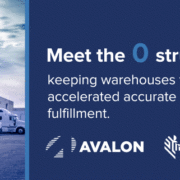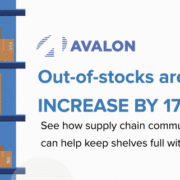The rise in consumer demands for sustainable and environmentally conscious warehousing has skyrocketed within the past years as more consumers grow concerned with the environmental impact of their preferred brands. While recycling and trade-in programs can reduce e-waste in the warehouse, there are other efficient small-scale solutions to reduce environmental impacts. Despite accounting for less than 10% of your operation’s total expenses, enterprise labels significantly contribute to warehouse waste over time. Labels and other paper waste contribute to the 85,000,000 tons of paper waste hitting landfills per year, and product packaging is usually first in the most disposed paper products. Although reducing paper waste may require more effort than label optimization, your consumables are still a good place to start when creating a sustainable warehouse.
Evaluating your operations to ensure environmental sustainability is crucial to make sure you are getting everything out of your labels. A proactive label evaluation can help establish visibility and cut down on unnecessary costs by pinpointing areas where better labels can be implemented. The goal should be to create a labeling system that empowers:
- Waste reduction – To accomplish this, many businesses are now turning to linerless labels, thus removing the additional paper waste from the adhesive backing. Another way to avoid paper waste is by preventing labor jams through purpose-built printheads and easier media loading.
- Easy reutilization– For businesses reusing labeled containers, new tag options like dissolvable labels allow businesses to easily wash away adhesives without leaving behind any residual glue that can prevent new labels from sticking. Paper fibers are environmentally friendly to prevent water pollution.
- Seamless recycling at the end of the supply chain – Evaluate how your labeled items are entering and exiting the market. If labeled items are received by another facility within your business, you can maintain control of the handling or disposal of these items.
Streamline high performance with certified printing supplies
Building on a long history of warehouse optimization, Zebra’s certified labels continue to provide a scalable and adaptable way to improve supply chain workflows and meet customer demands. Designed to retain legibility even in the harshest conditions, the following three labels prioritize sustainability and decreased environmental impact while protecting maximum uptime:
- Take sustainability a step further at its face with adhesive that readily dissolves under running water, further reducing waste and pollutants with the 8000D Dissolvable Label. These labels provide a more efficient means to removing disposable labels for seamless reutilization of containers and bins.
- Eliminate the need for a liner with Zebra’s Linerless Labels. To reduce extraneous amounts of paper waste, Zebra’s linerless labels do not need a thermal printing ribbon and gives workflows more labels per roll along with a scratch-resistant and smooth surface for maximized printhead performance.
- Enable easy recycling to lower the amount of packaging that hits landfills with the PolyE 4000D Label and Z-Perform 1000DF Label. Made from consistently tested materials, these labels are engineered to comply with environmental standards for easy recycling.
When it comes to driving sustainability in the modern warehouse, every small detail can create a long and lasting impact. Contact us today to being your comprehensive label evaluation and see how you can reduce costs and waste in your operations.





